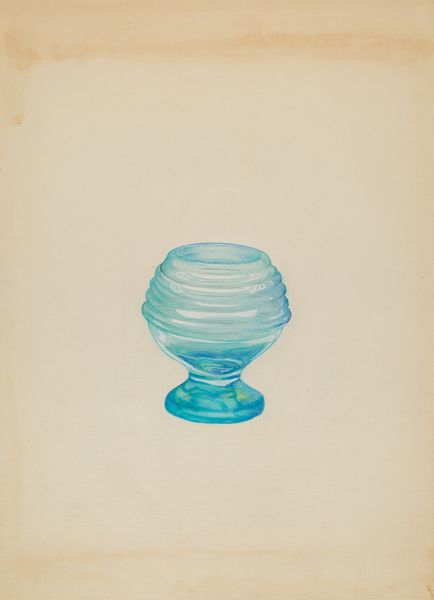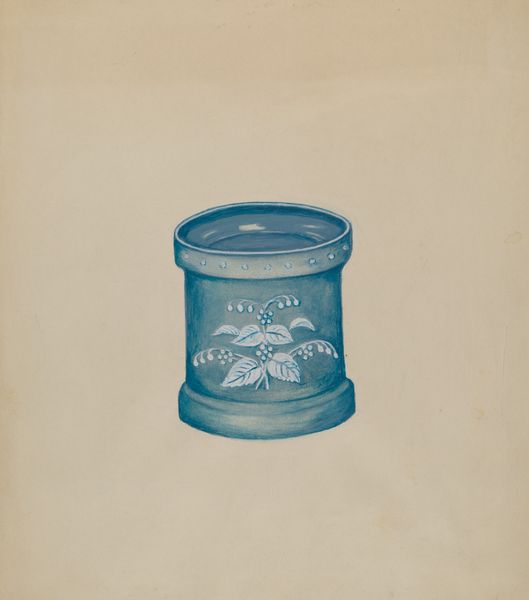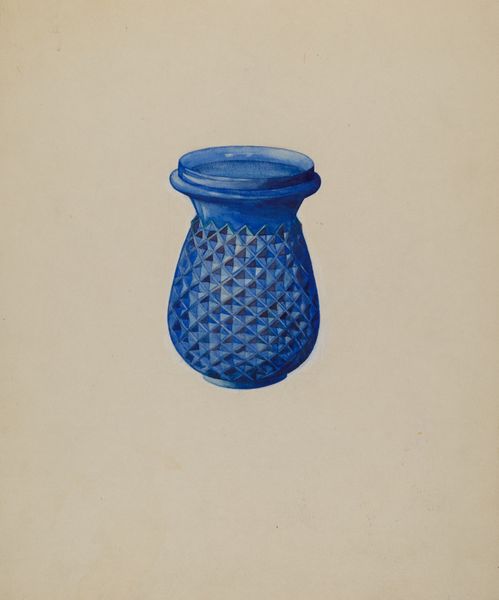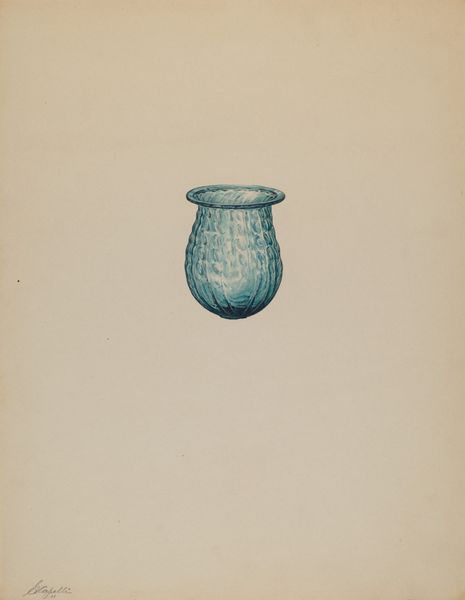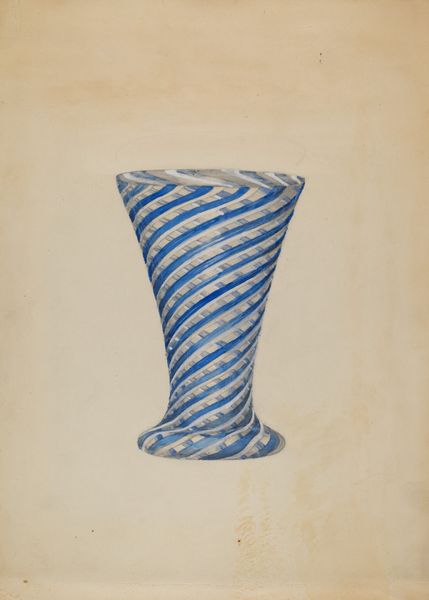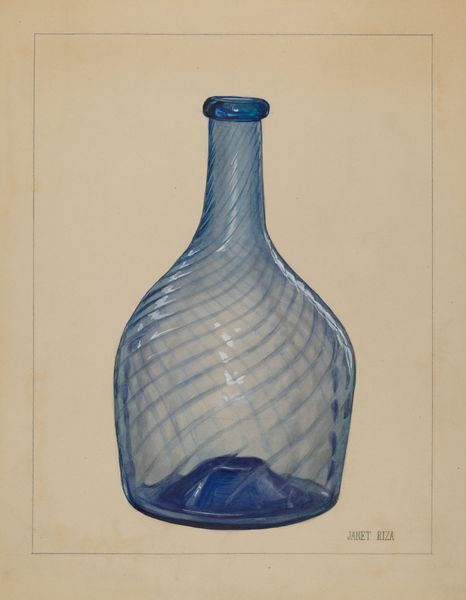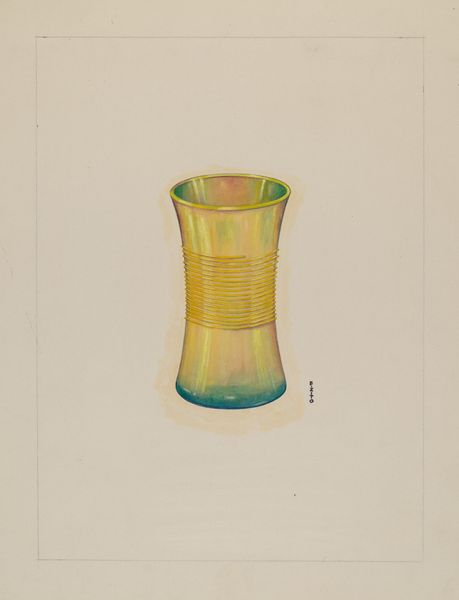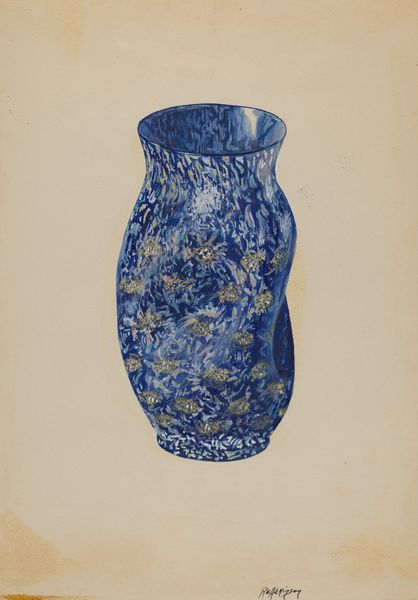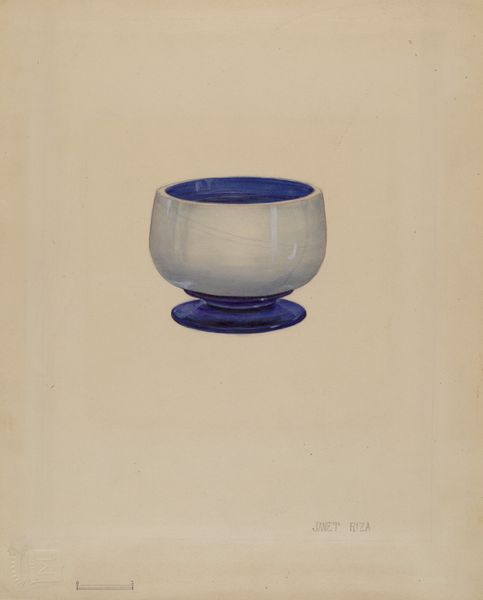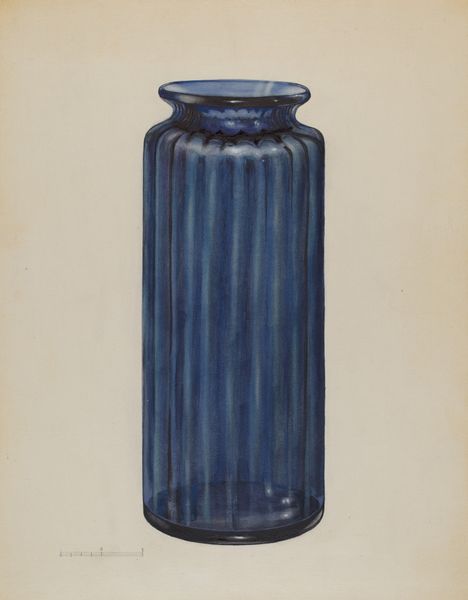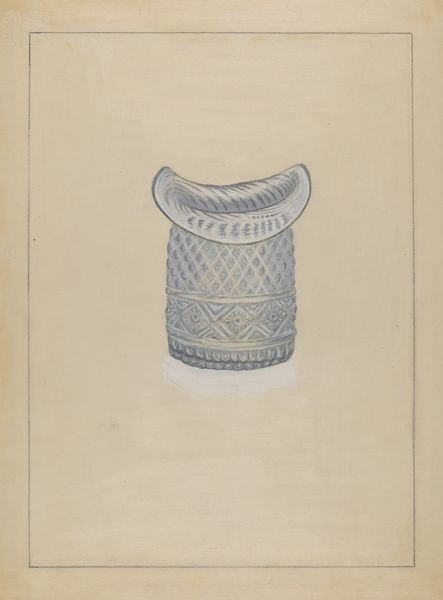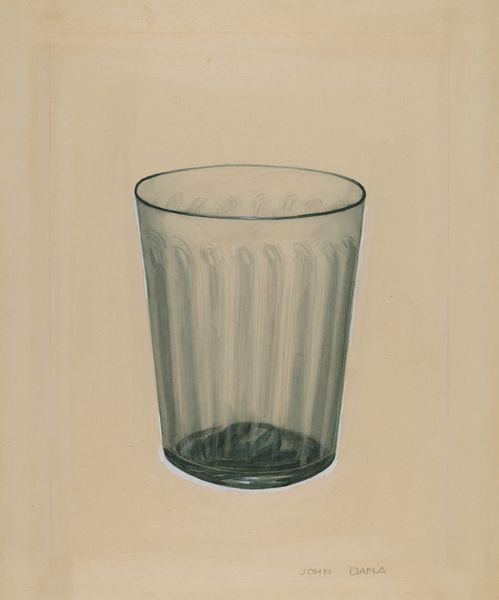
drawing
#
drawing
#
geometric
#
realism
Dimensions: overall: 29.9 x 23.1 cm (11 3/4 x 9 1/8 in.)
Copyright: National Gallery of Art: CC0 1.0
Editor: We’re looking at “Tumbler,” a drawing by Charles Caseau from around 1936. It's just... a glass. But the way the light catches the swirling pattern is really beautiful. What stands out to you in this piece? Curator: Well, first off, that this isn't *just* a glass, right? It's a choice, a statement, even. Caseau decided that out of everything he could draw, he would carefully render a common glass. And there’s an intimacy to that; he sees beauty in the everyday. I wonder what he had in that glass when he drew it? Something celebratory perhaps, or just a cool glass of water. What do you think this object means to the artist? Editor: I didn’t think about it that way, actually. It does feel quite intimate. Maybe the artist just liked how the geometry of it looked when illuminated. Curator: Geometry illuminated – I like that. Yes, look at how the light catches those swirling patterns. It reminds me a little of how Morandi elevated humble bottles in his paintings. Could this just be an exercise in form for him? Also I like that sharp, distinct line and shadow that accentuates the bottom part of the drawing. Editor: So, this is more than just realism; there's a bit of emotional attachment there? It is such an ordinary item, yet elevated, almost with tenderness! Curator: Exactly. Caseau, through this simple drawing, compels us to see the art that surrounds us every day, in the simplest of things. What is art but taking what's readily available and creating meaning with it? A lovely choice for us to ponder, thanks! Editor: Thank you; I'll think about ordinary things very differently now.
Comments
No comments
Be the first to comment and join the conversation on the ultimate creative platform.
